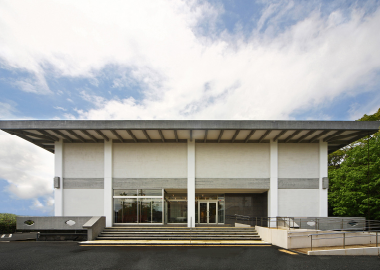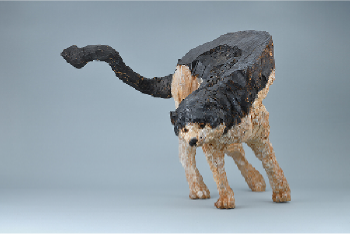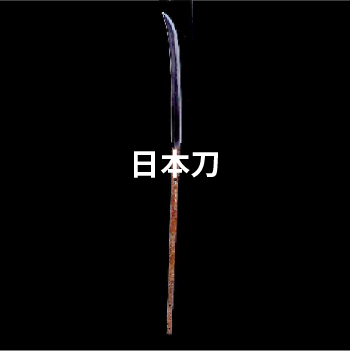Headline ...

Toggle, toggle, toggle, toggle, toggle, toggle, toggle, toggle
Toggle, toggle, toggle, toggle, toggle, toggle, toggle, toggle
Toggle, toggle, toggle, toggle, toggle, toggle, toggle, toggle
-
By train
○ From JR Tokyo Station, take the Kodama Shinkansen (approximately 1 hour) to JR Mishima Station
○ From JR Nagoya Station, take the Kodama Shinkansen (approx. 1 hour 40 minutes) to JR Mishima Station -
From the South Exit of JR Mishima Station
○Izu Hakone Railway Line (5 minutes) → 5 minutes walk from Mishima-Tamachi Station
○ 10 minutes by taxi
○Go south for 1.3km and turn left. It's a 17-minute walk. -
By bus
From the South Exit of JR Mishima Station
Take the Tokai Bus (Platform 4: To Ohira Garage *Except for the Santo Moon route) and get off at the Sano Art Museum stop. Please walk through the garden to reach the museum.
Heading Heading Heading
If you wish to use photographs or take photographs of artworks or facilities under the jurisdiction of the museum, you will need to complete a procedure. In addition, we will charge you a set fee for use. Please contact the museum before submitting your application.
We cannot accommodate requests for personal use or for the promotion of specific products.
To apply, you will need to submit by post a request for permission, a proposal outlining the intended use, and, for deposited works, a letter of consent from the owner, or, for works that are still under copyright protection, a letter of consent from the copyright holder.
It will take approximately two weeks from the receipt of your application documents until permission is granted.
Heading Heading Heading Heading Heading Heading Heading
Hashimoto Mio was born in Hyogo and grew up with her beloved dog, Gon-chan.
She recalls the death of her dog Gon-chan in 1987 as the saddest event of her childhood, and this led her to dream of becoming a veterinarian.
That dream changed after the Great Hanshin-Awaji Earthquake in 1995.
I knew that life would eventually come to an end, and that's why I wanted to make it my job to preserve and pass on that life...and that's why I chose the path of becoming an artist.
Here we will introduce unpublished works created before entering art university, as well as works created while studying there.
While approaching the origins of Mio Hashimoto,
We will also be showcasing Tsuki-kun, a black Shiba Inu, and a special piece called "Carl," which will be on public display for the first time and was created at the request of the manager of the store where he worked part-time while in graduate school.
- list
- list
- list
- list

Image 350 Headline Headline Headline Headline Headline
Hashimoto Mio was born in Hyogo and grew up with her beloved dog, Gon-chan.
She recalls the death of her dog Gon-chan in 1987 as the saddest event of her childhood, and this led her to dream of becoming a veterinarian.
That dream changed after the Great Hanshin-Awaji Earthquake in 1995.
I knew that life would eventually come to an end, and that's why I wanted to make it my job to preserve and pass on that life...and that's why I chose the path of becoming an artist.
Here we will introduce unpublished works created before entering art university, as well as works created while studying there.
While approaching the origins of Mio Hashimoto,
We will also be showcasing Tsuki-kun, a black Shiba Inu, and a special piece called "Carl," which will be on public display for the first time and was created at the request of the manager of the store where he worked part-time while in graduate school.

Image 740 Headline Headline Headline Headline Headline
Hashimoto Mio was born in Hyogo and grew up with her beloved dog, Gon-chan.
She recalls the death of her dog Gon-chan in 1987 as the saddest event of her childhood, and this led her to dream of becoming a veterinarian.
That dream changed after the Great Hanshin-Awaji Earthquake in 1995.
I knew that life would eventually come to an end, and that's why I wanted to make it my job to preserve and pass on that life...and that's why I chose the path of becoming an artist.
Here we will introduce unpublished works created before entering art university, as well as works created while studying there.
While approaching the origins of Mio Hashimoto,
We will also be showcasing Tsuki-kun, a black Shiba Inu, and a special piece called "Carl," which will be on public display for the first time and was created at the request of the manager of the store where he worked part-time while in graduate school.
Windows: Edge 136, Google Chrome 136 / Mac: Safari 18.4, Google Chrome 136
*Some functions may not work depending on the environment of your computer.







